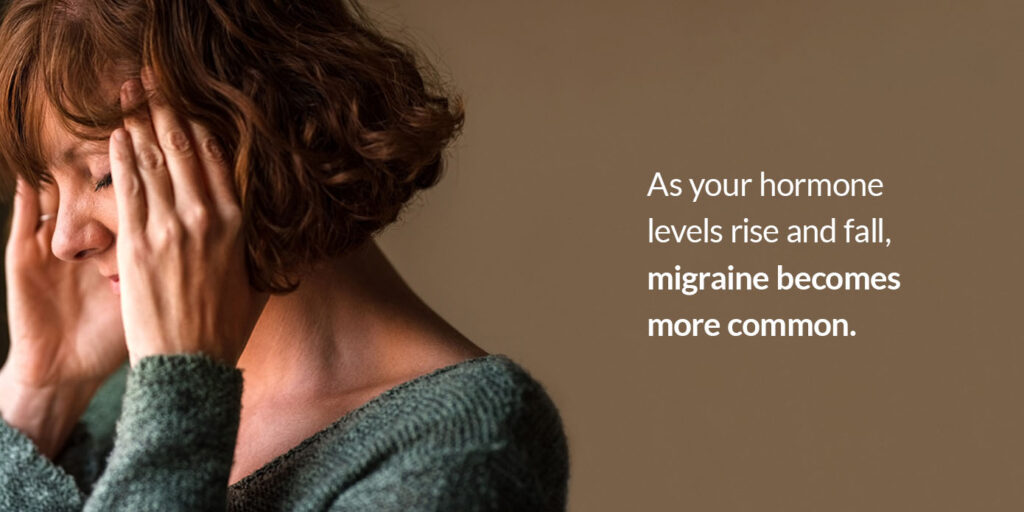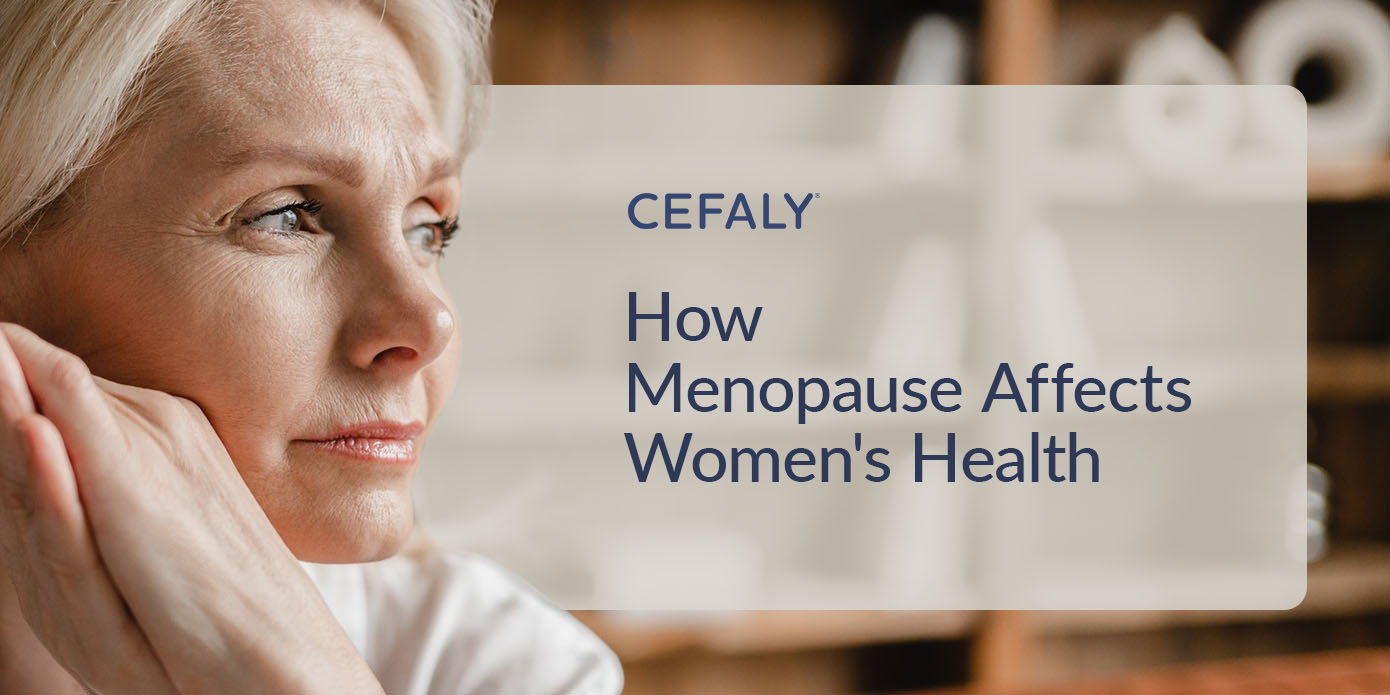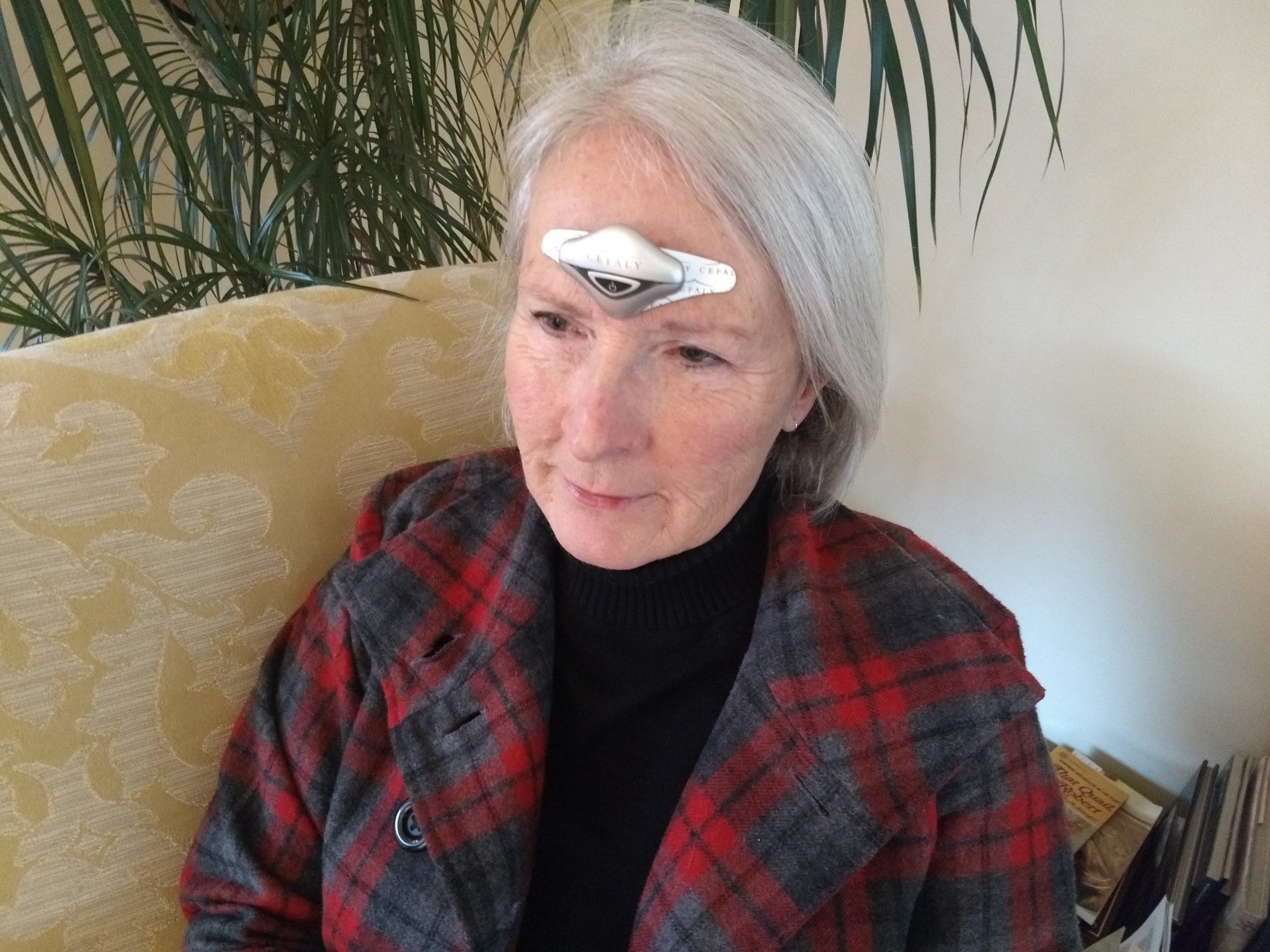Menopause is an essential natural process for women, marking the end of regular menstrual cycles. Navigating this period becomes more challenging when you also manage migraine attacks. Migraine often becomes more common during the transition into menopause due to hormonal changes. Developing a healthy treatment plan can help you manage menopausal symptoms and migraine with less difficulty.
What is menopause?
Menopause is the point when women no longer have regular menstrual cycles. It usually happens between the ages of 45 and 55. During this time, women experience sudden symptoms that can affect their mood or physical condition.
Menopause has three stages:
- Perimenopause: Perimenopause is the transition into menopause, beginning eight to 10 years before. Women start experiencing changes in their menstrual cycles and their bodies produce less estrogen during this period.
- Menopause: Menopause marks the end of your menstrual cycles. Ovaries stop releasing eggs and estrogen production. Healthcare providers officially diagnose menopause after women go without a period for 12 months in a row.
- Post-menopause: Post-menopause is the rest of life after menopause occurs. Depending on the individual, symptoms might lessen or persist in the following years.
Menopause stages and symptoms can last from seven to fourteen years. The exact duration depends on lifestyle, age and ethnicity.
What are the symptoms of menopause?
Menopause causes a sudden drop in estrogen levels, leading to a variety of symptoms in the body. You can usually tell menopause starts when you experience signs like:
- Changes in menstruation: Regular menstrual cycles change in the months leading up to menopause. Periods usually occur irregularly, such as in alternating months. They might also have a heavier or lighter flow than normal. It becomes challenging to track your cycles or anticipate your next period.
- Hot flashes: One of the most common signs of menopause is hot flashes. Nearly 75% of women experience these sudden increases in body temperature during their transition into menopause. Your body suddenly becomes inflamed with heat, often in the face, neck and chest. Hot flashes can also cause increased heart rate, sweating, dizziness or heart palpitations. Hot flashes vary in intensity and duration, making it hard to predict how they will impact you.
- Bladder control: You might also experience changes in bladder behavior. Some women need to urinate more frequently than usual. Pelvic muscles often relax during menopause, which can cause urinary incontinence.
- Difficulties with sleep: Women might have trouble falling or staying asleep, also known as insomnia. Lack of sleep makes it harder to complete daily tasks and can increase the chance of developing other conditions.
- Vaginal health: Your vagina also changes during menopause. Vaginal tissues dry and thin during the process, causing discomfort during sex.
- Mood changes: Menopause also affects your moods. You might experience sudden feelings of irritation, depression or nervousness. Trouble with concentration is also common.
- Physical changes: Menopause is a significant physical change for the body. It’s common to feel dry skin, eyes and mouth during the transition. You might also experience hair loss or thinning and breast tenderness. Some women gain weight during menopause, especially around their abdomens.
- Headaches and migraine: You can also encounter increased headaches or migraine attacks during the transition to menopause. As your hormone levels rise and fall, migraine becomes more common.

Exact symptoms and severity vary by person. Some women encounter every symptom, while others might only face a few.
Menopausal migraine
Because hormones are directly associated with migraine, women might experience more migraine attacks during perimenopause. As the body prepares itself for menopause, hormone levels change drastically. The more they fluctuate, the more likely women are to experience migraine symptoms or attacks. Managing migraine with all the other menopausal symptoms can be draining.
However, migraine attacks often decrease or stop altogether once you reach menopause. Menopause stabilizes hormone levels, decreasing the possibility of hormone-related migraine. You might stop having migraine attacks altogether, though this varies from person to person.
Learn How CEFALY Prevents & Relieves Migraine Pain
Treatments for menopausal migraine
Experiencing migraine during your transition to menopause can feel overwhelming. Fortunately, you can work with your healthcare provider and develop a treatment plan to relieve symptoms and pain. They might recommend treatment strategies like:
- Lifestyle changes: You can commit to various lifestyle changes that can decrease migraine frequency. For instance, consistent routines can help with managing migraine. Getting consistent sleep, eating a nutritious diet and getting regular exercise might decrease migraine attacks. A healthy routine can also lower stress, making it easier to navigate menopause.
- Hormone replacement therapy (HRT): Many women take HRT medications to regulate their hormones during menopause. These medications replace estrogen and help your hormones stay more stable, decreasing the possibility of a hormonal migraine. You can take HRT in pills, sprays, patches or many other forms. However, HRT can have negative side effects in some people. It’s related to increased risk for heart disease and breast cancer. You should discuss taking HRT with your doctor first to make sure it’s safe for your body.
- Acute treatment: Many acute treatments are also available for menopausal migraine. You can take these medications or use these treatments at the onset of a migraine to help reduce pain. For instance, you could take tablets like sumatriptan to relieve pain and migraine symptoms. Sumatriptan is also available as a nasal spray or injection, allowing you to pick the method that suits you best. You could also use treatment devices like CEFALY to relieve migraine pain. CEFALY is an FDA-approved device that reduces pain and reduces migraine frequency over time.
Get Drug-Free Migraine Relief With CEFALY
Shop Now
90-day money back guarantee
FDA-cleared
financing available
CEFALY can provide relief from menopausal migraine
If you’re experiencing menopausal migraine, find relief with CEFALY today. CEFALY devices target your trigeminal nerve, the primary pathway for migraine pain. When you place CEFALY on your forehead, it transmits a mild electric stimulation to the trigeminal nerve, reducing pain severity.
Each CEFALY device has two different modes:
- ACUTE: Use the ACUTE treatment function to relieve pain when you experience the first signs of a migraine attack. It reduces pain during migraine, allowing you to get back to daily life more quickly.
- PREVENT: Use the PREVENT treatment mode every day to decrease migraine frequency. Over time, the repeated sessions desensitize your trigeminal nerve.
Relieve your menopausal migraine pain with a CEFALY device. To get started, shop online with CEFALY today.















